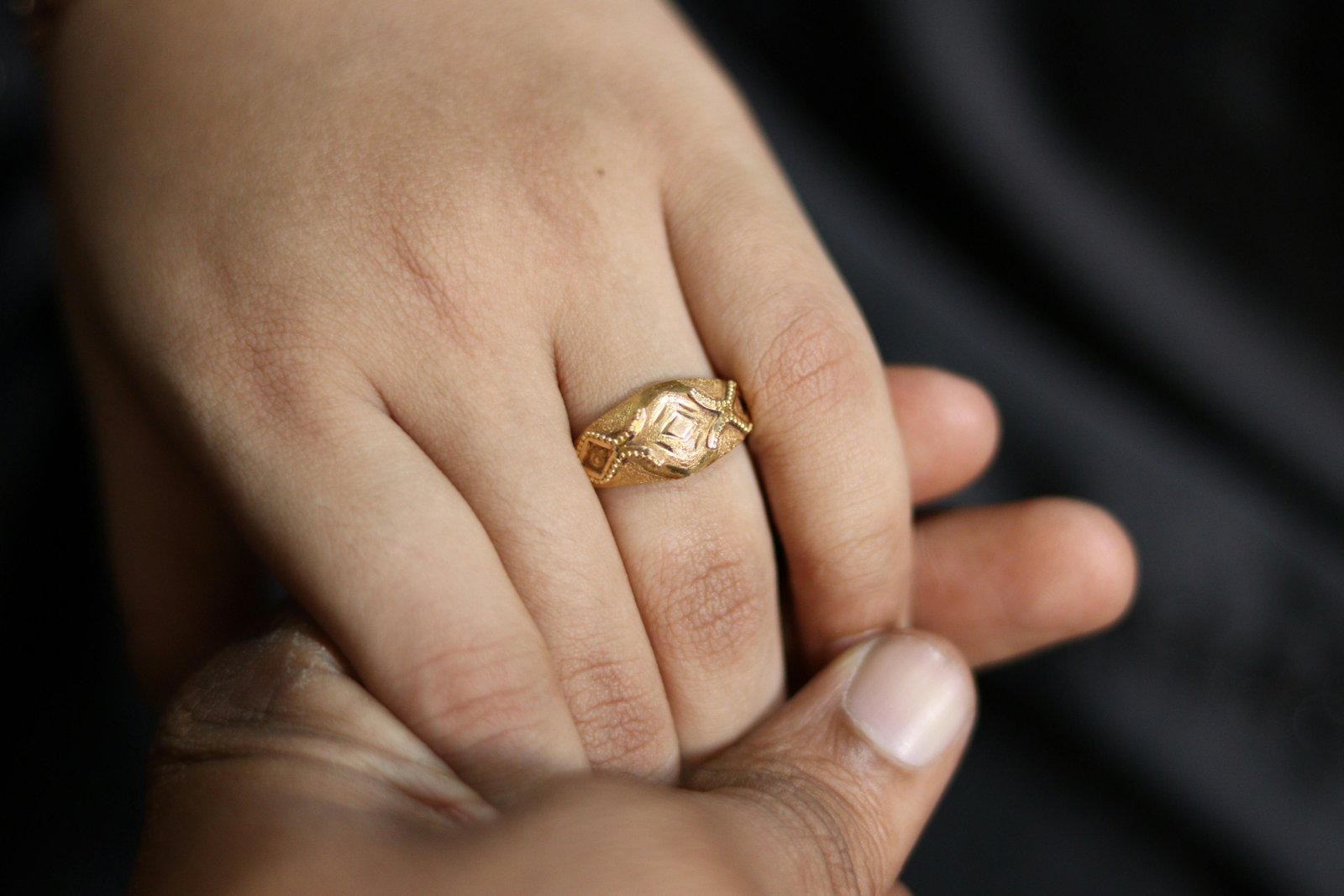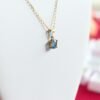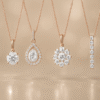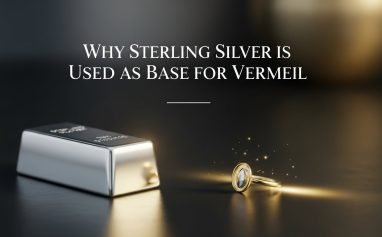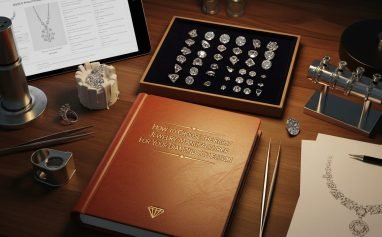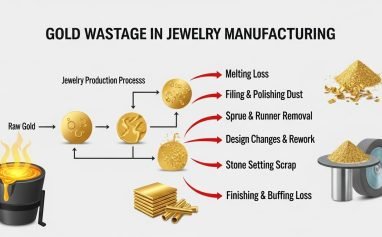Gold Vermeil vs. Gold Plating: Key Insights
Why This Decision Matters More in 2026
Jewelry buyers today are not the same as they were even three years ago. The rise of TikTok jewelry hauls, Instagram “what I ordered vs. what I got” reels, and Google-savvy customers has changed the retail landscape. A shopper doesn’t just glance at a piece anymore; they Google what “vermeil” means, they compare micron thicknesses, and they even ask in reviews: “Is this really vermeil or just plated?”
As a retailer, I’ve seen this firsthand. In 2025, when gold prices surged to historic highs, I had to make sharper decisions on plating specifications. I couldn’t just “order gold plated” anymore — I had to know exactly how many microns, which barrier metals, and whether to invest in vermeil for my core line.
Why? Because every return eats into margins. Every “faded quickly” review dents conversion. And every misplaced label risks regulatory trouble.
That’s why, as we move into 2026, I consider the vermeil vs. plating decision one of the most strategic calls a retailer can make.
Let’s Get Definitions Straight
What is Gold Vermeil?
“Vermeil” is not marketing fluff — it’s a legal and technical standard, especially in the U.S. market. To call a piece “vermeil,” it must meet three conditions:
- Base metal: Sterling silver (925).
- Gold thickness: At least 2.5 microns on all significant surfaces.
- Gold karat: At least 10k purity.
That’s it. No brass, no “flash plating” pretending to be vermeil, no shortcuts. If you’re calling something vermeil in the U.S., you’re legally bound to that recipe.
What is Gold Plated?
“Gold plated,” by contrast, is a wide umbrella. It simply means a thin layer of gold has been deposited over a base metal (which could be brass, bronze, copper, stainless steel, or even silver). The thickness can vary drastically:
- Flash plating: As low as 0.03–0.175 microns. This is what many budget brands use for trend jewelry.
- Standard plating: Around 0.5–1.0 microns. Adequate for occasional wear.
- Heavy plating: 1.0–2.5 microns. This is where durability improves significantly.
But unlike vermeil, there’s no strict legal requirement for thickness or base metal unless you make misleading claims. That flexibility is why plating can serve both ultra-budget SKUs and surprisingly premium ones.
The Retailer’s Cheat Sheet
| Attribute | Gold Vermeil | Gold Plated (Thin) | Gold Plated (Thick) |
| Base Metal | Sterling Silver (925) | Brass, bronze, stainless, silver | Brass, bronze, stainless, silver |
| Gold Thickness | Minimum 2.5 µm | <0.5 µm (often 0.03–0.175 µm flash) | 0.5–2.5 µm |
| Durability | High | Low–moderate | Moderate–high |
| Perceived Value | Premium | Budget | Mid-tier |
| Allergy Concerns | Low (if nickel-safe barriers used) | Depends on base/barrier | Depends on base/barrier |
| Legal Risk | Low if FTC-compliant | Low if not misrepresented | Low if disclosed |
| COGS | Higher | Lowest | Moderate |
Durability: The Details That Decide
When a customer complains “the gold faded too quickly,” nine times out of ten it’s not because of gold quality — it’s because of plating decisions.
Here are the 3 most important durability factors I consider:
- Barrier Layers
Sterling silver has a tendency to migrate into the gold layer, which can discolor it. That’s why professional plating stacks often include a palladium or nickel-free barrier before the gold.
Without this step, even vermeil can tarnish faster.
- Micron Thickness
- Think of thickness like armor.
- Rings and bracelets (high-contact) → need 2.0–2.5 µm.
- Earrings and pendants (light wear) → can last with 1.0–1.5 µm.
- Party-only statement jewelry → even 0.5 µm can work if expectations are set.
- Protective Coatings
- Modern nano-ceramic or e-coatings create a transparent shield.
- They don’t replace microns but extend lifespan by resisting scratches, sweat, and lotions.
Skin Sensitivity & Regulations
Here’s a reality: Nickel allergy affects between 8% and 19% of adults, and once a customer has a reaction, they’ll leave a scathing review.
That’s why nickel-safe engineering is non-negotiable.
- In the EU, jewelry in prolonged contact with skin must release ≤0.5 µg/cm²/week of nickel.
- For body piercings, the limit is stricter: ≤0.2 µg/cm²/week.
- Tests like EN 1811:2023 verify compliance, and European retailers can demand reports.
When I brief Nakassi for EU-bound collections, I insist on:
- Nickel-safe barriers in plating stacks.
- Verified EN 1811 compliance for posts and rings.
- Transparent PDP notes like “Nickel-safe, tested to EU standards.”
This reduces returns, builds customer trust, and simplifies compliance checks.
The Cost Reality: Designing with Gold Prices in Mind
Gold prices hit record highs in 2025 and are expected to stay elevated in 2026. This has forced every retailer to rethink plating specifications.
- A vermeil ring requires at least 2.5 microns of gold across the surface — and when gold is above $3,300/oz, that adds up quickly.
- A plated ring with 1.0 micron on brass costs significantly less while still delivering decent daily-wear performance.
That’s why I don’t treat vermeil and plating as an either/or. Instead, I use them strategically in my SKU mix:
- Vermeil for evergreen, premium designs — customers expect longevity.
- Plated (1.0–1.5 µm) for daily-wear trends — balance of cost and durability.
- Plated (0.5–0.8 µm) for occasional/party wear — clearly positioned as fashion-forward and affordable.
Conversion & Returns: The Case for Transparency
The way you describe plating in product copy directly affects returns. Here’s why:
- Customers hate surprises. If you sell a 0.5 µm plated ring but don’t disclose it, you’ll get angry “faded after 2 weeks” reviews.
- When you disclose plating specs openly, customers adjust expectations — and negative reviews drop dramatically.
I’ve tested this. In one of my plated collections:
- Without disclosure: 12% return rate.
- With disclosure (“1.0 micron gold over brass, nickel-safe barrier, care instructions”): Return rate dropped to 6%.
Lesson: Honesty in specs doubles as a conversion booster.
When to Choose Gold Vermeil
I choose vermeil when:
- I want premium positioning (giftable, long-term value).
- I need higher review scores (fewer durability complaints).
- I’m pairing with gemstones — vermeil enhances the perceived luxury.
Best categories:
- Everyday hoops.
- Chains and pendants.
- Premium rings and bracelets.
When to Choose Gold Plating
I choose plating when:
- I’m chasing seasonal trends (chunky rings, enamel charms, festival jewelry).
- I want affordable price points for mass appeal.
- I need speed to market (plating lets me launch 20 SKUs quickly).
Best categories:
- Statement pieces.
- Party jewelry.
- Charm-based collections.
2026 Collection Strategy (How I Brief Nakassi)
Here’s my SKU mix going into 2026:
- 60% Vermeil Core Capsule
- 2.5–3.0 µm, sterling silver base.
- Classic hoops, chains, everyday solitaires.
- Premium packaging.
- 30% Plated Fashion Capsule
- 1.0–1.5 µm over brass/stainless.
- Barrier + protective coat.
- Trend-driven pieces, rotated quarterly.
- 10% Seasonal Capsule (Occasional wear)
- 0.5–0.8 µm plating.
- Clearly labeled as occasional wear.
- Festival, party, or holiday pieces.
This balance gives me both premium perception and trend responsiveness.
Messaging Playbook for PDPs
- For vermeil:
“Genuine gold vermeil: thick 2.5 µm layer of 14k gold over recycled 925 sterling silver with a nickel-safe barrier for lasting shine.”
- For plated (daily wear):
“Durable 1.2 µm gold plating over brass with a protective nano-coating. Designed for everyday shine — remove before shower for best results.”
- For plated (occasional wear):
“Light 0.6 µm gold plating over brass, ideal for occasional or party wear. Affordable sparkle designed for trend-led styling.”
Buyer FAQ
Is vermeil always better?
Not necessarily. Thick plating (2.0 µm+) with barriers can rival vermeil — but most “plated” jewelry on the market is far thinner.
Should we print micron thickness on PDPs?
Yes. It builds trust, sets expectations, and reduces returns.
Will plated jewelry irritate sensitive skin?
Not if nickel-safe barriers are used and tested against EU standards.
Pitfalls to Avoid
- Calling brass-based pieces “vermeil.” (Legal and reputational risk.)
- Using “flash plated” pieces for daily-wear categories.
- Skipping barrier metals on silver (faster fading).
- Ignoring EU nickel-release rules (especially for posts and rings).
Final Recommendation for 2026
As a retailer working with Nakassi, here’s my advice:
- Build your core capsule in vermeil. It gives longevity, fewer complaints, and premium positioning.
- Use thick plating for trend capsules. At least 1.0 µm, with barriers and protective coats.
- Disclose everything. Base metal, micron count, barrier layer, and care guidance. Customers reward transparency.
- Align with compliance. Meet FTC standards in the U.S. and EN 1811 in Europe.
With this strategy, you’ll reduce returns, increase review quality, and protect your margins while offering jewelry that feels premium yet accessible.
Nakassi commitment:
- Vermeil at 2.5–3.0 µm on sterling silver.
- Gold plating at 1.0–1.5 µm on brass/stainless with protective coatings.
- Nickel-safe barriers and compliance-ready specs.
- Clear, retailer-friendly product descriptions.
That’s how Nakassi helps you retailers thrive in 2026.

Abhishek is a jewelry industry professional with over 5 years of experience in retail jewelry and manufacturing. Having worked closely with global retailers, manufacturers, and designers, he brings deep insights into jewelry trends, materials, and production techniques

